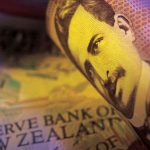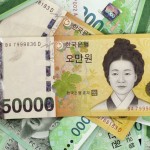The Aussie lost positions against its US counterpart for the first time in one week on Thursday, falling from its highest point in two months, after a report showed that Australian unemployment rate rose to a four-year peak.
AUD/USD slipped to a session low at 0.9233 at 6:59 GMT, after rising to its strongest point since June 19th, 0.9354. At 7:13 GMT the pair was trading at 0.9247, retreating 0.89% for the current day. Support was expected at September 9th low, 0.9168, while resistance was to be encountered at June 10th high, 0.9480.
Earlier today the Australian Bureau of Statistics reported that the country registered the first period, during which employment decreased in two consecutive months, as this has not been observed for the past over two years. This data outlined the challenges, which the new Prime Minister Abbot is facing in order to spur economic development. According to released data, the number of employed people in the country decreased by 10 800 in the month of August compared to July, when the number dropped by 11 400. Experts had projected that the number of employed will increase by 10 000. At the same time, the unemployment rate rose to the highest in four years, reaching 5.8% in August, as a month earlier the rate stood at 5.7%.
“The unemployment rate would be key to determining whether the RBA does cut rates again, so today’s number reinforces our view that there will at least one more cut in the cycle,” said Ray Attrill, the global co-head of currency strategy at National Australia Bank Ltd, cited by Bloomberg. “The fall back in the Aussie is justified.”
The media also reported that traders saw a 40% probability that the Reserve Bank of Australia will consider a reduction of its benchmark interest rate from the current level of 2.5% by the end of the year. This marked an increase in odds, as yesterday indications pointed a 33% chance of a rate reduction.
Additionally, Australian government bonds rose, as the yield on the 10-year bonds dropped 13 basis points (0.13 percentage point) to reach 4.04% from yesterday, when it touched 4.20%, or the highest level since March 2012.
Meanwhile, the Australian currency was losing ground against the euro, with EUR/AUD cross rising 0.86% to trade at 1.4395 at 7:37 GMT. AUD/NZD pair plunged 1.49% on a daily basis to trade at 1.1375 at 7:39 GMT. Reserve Bank of New Zealand decided to leave its benchmark rate unchanged at the record low level of 2.50%, but said that in 2014 the rate might be raised, as economy was improving and inflation rate rising.





